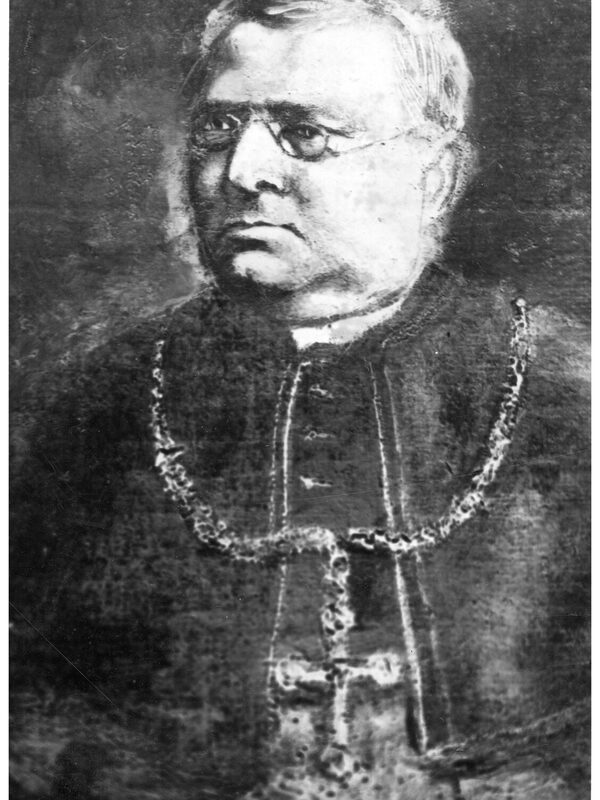Weyland, Josef
Weyland, Josef
Catholic clergyman
Born: 13.03.1826 in Hadamar
Died: 11.01.1894 in Fulda
Weyland studied in Giessen and at the seminary in Limburg, where he was ordained a priest in 1848. After years as chaplain in Rennerod and Höchst, he spent seven years as chaplain at Frankfurt Cathedral. The activities of a metropolitan parish, the political and social conflicts of the time and contacts with important personalities left their mark on the young cleric.
After three years as parish administrator in Lorch, he became coadjutor to the ailing Wiesbaden parish priest Franz Ferdinand Petmecky in 1861 and took over this office after Petmecky 's retirement in 1862. In 1863, he was appointed dean, and in 1866, ecclesiastical councillor. During his time in office, the number of Catholics in the city grew from 5,600 to 16,000 and a future division of the parish of St. Boniface seemed inevitable. In 1869, Weyland had the foresight to pave the way for a contemporary reorganization of the parish by purchasing a building site for the later Maria Hilf Church.
As part of the May Laws of the Prussian Kulturkampf, the Old Catholics were permitted "joint use of the churches"; however, this had been forbidden to Catholics by a fundamental decision of the Fulda Bishops' Conference. Under Weyland, the Wiesbaden Catholics created an emergency church in the garden of the Marienheim. To finance this, appeals for collections were made to all German and French Catholics and attracted international attention to Wiesbaden. In this situation, Father Weyland was appointed Papal Prelate by Pope Leo XIII in 1882. In 1886, the parish was able to return to its Boniface Church.
In 1887, Weyland was elected Bishop of FuPetmecky 's retirement in 1862. In 1863, he was appointed dean, and in 1866, ecclesiastical councillor. During his time in office, the number of Catholics in the city grew from 5,600 to 16,000 and a future division of the parish of St. Boniface seemed inevitable. In 1869, Weyland had the foresight to pave the way for a contemporary reorganization of the parish by purchasing a building site for the later Maria Hilf Church.
As part of the May Laws of the Prussian Kulturkampf, the Old Catholics were permitted "joint use of the churches"; however, this had been forbidden to Catholics by a fundamental decision of the Fulda Bishops' Conference. Under Weyland, the Wiesbaden Catholics created an emergency church in the garden of the Marienheim. To finance this, appeals for collections were made to all German and French Catholics and attracted international attention to Wiesbaden. In this situation, Father Weyland was appointed Papal Prelate by Pope Leo XIII in 1882. In 1886, the parish was able to return to its Boniface Church.
In 1887, Weyland was elected Bishop of Fulda and left Wiesbaden at the beginning of 1888. His tomb can be found in the bishop's crypt in Fulda Cathedral.
Literature
Yearbook of the Diocese of Limburg 1956 [p. 53 ff.].
Gatz, Erwin: Die Bischöfe der deutschsprachigen Länder 1785/1803 bis 1945, Berlin 1983 [p. 812 f.].
Schatz, Klaus: History of the diocese of Limburg [p. 216].
